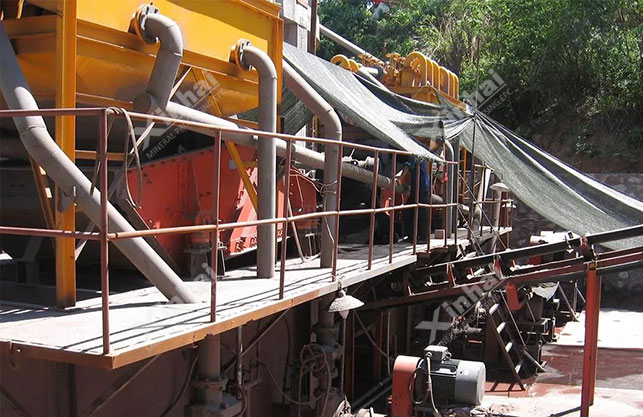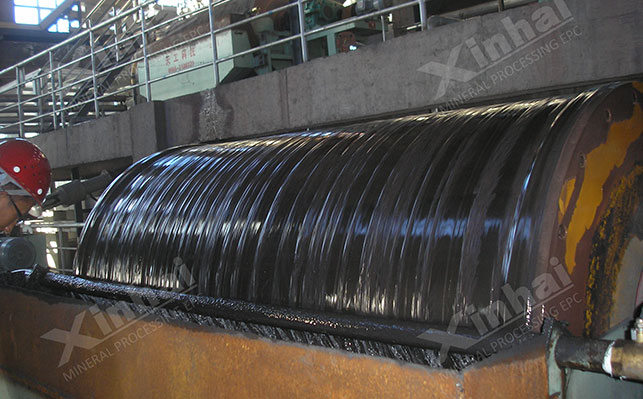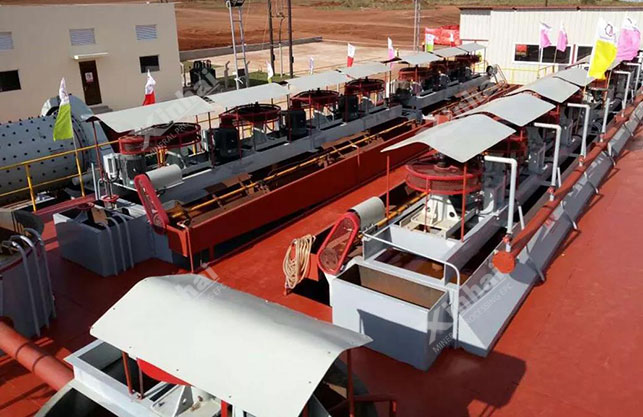
15311826613
Click to add WeChatKaolin is a common clay mineral in nature and the main raw material for making white pigments. Among them, whiteness is the main performance parameter that affects the value of kaolin. Kaolin often contains harmful impurities such as iron, organic matter, and dark matter. These impurities will make kaolin appear different colors and affect its whiteness. Therefore, Kaolin purification is essential before using kaolin, as impurities must be removed through this process.
Common methods for kaolin purification include gravity separation, magnetic separation, flotation, chemical treatment, etc.

Gravity separation uses the density difference between gangue minerals and kaolin to remove high-density impurities such as light organic matter, quartz, feldspar, and iron-titanium-manganese-containing elements, thereby reducing the impact of impurities on whiteness.
Centrifugal concentrators are usually used to remove high-density impurities. It can also be used for washing and screening operations in kaolin beneficiation. However, the re-purification efficiency of gravity separation cannot meet the purity requirements, and further purification is still required through magnetic separation, flotation, calcination and other methods.

Almost all kaolin ores contain a small amount of iron minerals, such as ilmenite, siderite, pyrite and other coloring impurities. Magnetic separation uses the magnetic difference between gangue minerals and kaolin to remove these coloring impurities.
For strongly magnetic minerals such as magnetite and ilmenite or iron filings mixed in during processing, it is more effective to use magnetic separation to select kaolin. For weakly magnetic minerals, there are two main methods: one is to roast first to turn the mineral into strongly magnetic iron oxide, and then perform magnetic separation; the other method is to use high-gradient strong magnetic field magnetic separation for magnetic separation.
However, it is difficult to obtain high-purity kaolin products using only a single magnetic separation method, and other processes such as chemical treatment are also needed to further reduce the iron content in kaolin products.

The flotation method mainly uses the difference in physical and chemical properties between the surface of gangue minerals and kaolin to treat kaolin ore with more impurities and lower whiteness, remove its iron, titanium and carbon impurities, and realize the comprehensive utilization of low-grade kaolin resources.
Kaolin is a typical clay mineral. Impurity minerals such as iron and titanium are often embedded between kaolin particles. Therefore, the ore must be ground into a certain fineness, and the particle size mostly belongs to the mud-grade particles mentioned in the flotation process. Common flotation methods for kaolin include ultrafine particle flotation, double liquid layer flotation and selective flocculation flotation.
The flotation method can effectively improve the whiteness of kaolin, but its disadvantage is that it needs to add chemical agents, resulting in increased production costs and easy environmental pollution.
Chemical leaching: Certain impurities in kaolin can be selectively dissolved by leaching agents such as sulfuric acid, hydrochloric acid, and nitric acid to remove impurities. This method can be used to remove hematite, limonite, siderite, etc. from low-grade kaolin.
Chemical bleaching: Impurities in kaolin can be oxidized into soluble substances by bleaching, and then washed and removed to improve the whiteness of kaolin products. However, the cost of chemical bleaching is relatively high, and it is usually used for kaolin concentrates that need to be further purified after impurities are removed.
Roasting and purification: By utilizing the differences in chemical composition and reaction activity between impurities and kaolin, magnetic roasting, high-temperature roasting or chlorination roasting and other treatment methods can be used to remove iron-containing impurities, carbon-containing impurities, sulfides and other impurities in kaolin. This method can improve the chemical reaction activity of the roasted product, greatly improve the whiteness of kaolin, and obtain high-grade kaolin products. However, the disadvantage of roasting and purification is that it consumes a lot of energy and is easy to cause environmental pollution.
The above are several common methods for kaolin purification. In fact, due to the large number of impurity types in kaolin, it is difficult to obtain the ideal kaolin grade by relying on a single mineral processing technology. It is recommended to conduct mineral processing tests and design a suitable combined purification process to complete the operation.